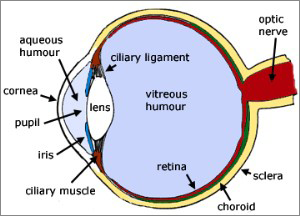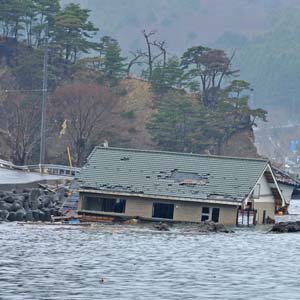
Don, thanks for the question. First and foremost, as most of you are aware, I consider Obama’s foreign policy to be his largest failing and undoubtedly view our actions in the Middle East though a less then unbiased lens. I will attempt to explain a thought process I do not agree with, while pointing out competing opinions on the subject.
Obama’s actions and inactions have closed doors to potential options that were less costly in the past. It has also opened doors to potential options that, unfortunately, most observers like myself view as unlikely to bear fruit. Sadly, regardless of good or bad strategy, the end state of our current strategy in the Middle East is an all but certain degradation of our influence in the region. The degradation of influence ultimately paints us into a corner where the only remaining option to maintain U. S. interests in the region is military force.
Rebuilding our influence in the region will certainly fall to the to the next U. S. president. To save you the read, the short answer is all that we can do is wait until after the election. The current administration has set the course we are on, and Obama has proven stubbornly resistant to changing it. The most poignant evidence of that resistance is the revolving doors in leadership at the department of defense and intelligence communities. The course he is pursuing is a nearly 180-degree shift from the previous 35 years, and it will take time for us, our allies and our enemies to understand its implications. The best I can offer is to review the administration’s strategy and where it may leave us in a year because what we are currently doing is defining the options that will be available to us in the future.

U. S. interests in the Middle East primarily consist of Energy Stability, Nuclear Non-proliferation, Counter Terrorism and the Expansion of Democracy. Traditional instruments of national power are Diplomatic, Informational, Military and Economic. We’ll take a very cursory look at the strategies Obama has employed, and what impact they have had in hopes of providing an increased understanding of our options and how they developed and have shifted.
During his second term, Obama has effectively limited our military engagement to Counter-Terrorism (CT). I have read a few pieces attempting to defend this decision as “the desire of the American people”, or “the only economically sustainable option”. Killing specific individuals that have the potential to coordinate and act in the United States is a very intelligence dependent operation. Using air power and drone strikes more broadly as this administration is prone to do has its own set of unintended consequences called “collateral damage”. The bottom line is that killing terrorists is a delaying action, which buys time to allow us to develop other long-term solutions. You cannot simply delay your way to any sort of victory.
As we disengage from the region, CT becomes more dependent on our partners to provide intelligence required to target specific individuals effectively. As we know, our alliances in the region are prone to shifting, and foremost driven by short-term self-interest. As power is consolidated in denied areas like ISIS controlled territory, we lose the ability to effectively employ a CT strategy. The real problem with a combination of disengagement and CT is the two approaches become mutually exclusive at a certain point. Very soon, we will be too blind to effectively employ a CT strategy under the current state of engagement.
When it comes to Nuclear Non-Proliferation, the treaty has all but wiped it from the list of U. S. concerns. The agreement provides an effective 150 Billion dollar stimulus package to Iran to support their sudden new desire not to become a nuclear power. There are some potential short-term delays in their ability to produce a weapon should they choose to, which are largely unverifiable. While we may have potentially extended their nuclear horizon by months or years, that extension is dependent on estimates based on the capabilities and facilities we are aware of. The lack of effective inspection makes this a dubious prospect at best. The strategy is ultimately based on an olive branch approach to trust Iran to change course.
The ultimate goal here is once again not a lack of strategy, but a diplomatic and economic strategy to entice Iran to join the western world on friendly and constructive terms. I consider this to be a naïve departure from the effective strategies that have kept the Iranian Theocracy in check for the past 35 years. It is, however, possible that Iran abandons its nuclear ambitions and partners with America making a legitimate effort to help it’s new partner with other interests in the region. While highly unlikely, that is the strategy we are executing under this treaty. The next president will have the task of dealing with the results.

Russia is the largest beneficiary of disruption in the straight as it increases the price of oil to a point where they can cost-effectively export. The relatively recent Russian partnership with Iran on Syria, ISIS, and Iraq certainly shifts the incentives for Iran away from U.S interests in the region. Currently, Russia is using ISIS as an excuse to bomb U. S. trained anti-Syrian forces. Our response has been non-existent. Russia has effectively stepped into the vacuum we created and has aligned with Iran, Syria, and Iraq. What it will demand in return can be expected to be in line with Russian interests which are rarely in concert with U. S. interests.
Lastly, when we look at the expansion of democracy, we abandoned the fledgling democracy in Iraq in 2012 knowing full well what the consequences of that decision would be. We have diplomatically isolated Israel and put their long-term survivability in the region at risk. This is not unintentional, nor a lack of a strategy. This is rooted in Obama’s belief that U. S. exceptionalism is a counter-productive to global cooperation, and that non-democratic forms of governance like Iran and Syria have some undefined value to the global community. This view is not something we can change for the next year.
The real casualty of Obama’s policies and actions in the Middle East is U. S. creditability with both our allies and our traditional enemies. We see that lack of respect or fear from Israel to Moscow, and Tehran to Istanbul. Israel is now engaging Russia on the issue of regional stability at both the diplomatic and intelligence sharing level. America is no longer seen as a potential threat nor a reliable partner in the region. That is where the next administration will have its largest challenge is rebuilding American creditability.
What does a credible Middle East strategy look like a year from now? It depends entirely on the good graces of Iran and Russia to be responsible state actors in the region, or the alternative that they are not. We have largely succeeded nearly all influence in the region on the prospect of “Hope” that they will “Change”. My suspicion is that we will have to rebuild that influence largely by force.
What remains to be seen is the impact of diplomacy on Iran. I suspect this approach will be a catastrophic failure. I sincerely hope I am wrong, and we can make headway on stability in the region over the next year. Regardless, when we look to Putin and Khomeini, Assad, Netanyahu, and the rest of Middle East leadership, the U. S. disengagement from the region has put us on the bench as a bystander dependent largely on the actions of Iran and Russia.
Unfortunately, until Mr. Obama’s experiment has run its course, we have almost no ability to predict what avenues will be open to us, and which will be closed. Asking what we should do in this environment is an unanswerable question, because we are doing has no basis in traditional or historic approaches. Once we have an administration that defines regional stability in terms of U. S. interests vice a diplomatic experiment, then perhaps we will be able to make some assessments.
I realize that provides no firm answer, but I see no strategy that Obama is willing to employ that has traditionally been used to enhance U. S. interests. Answering what we should have done is an exercise in futility at this point because those opportunities are relics of the past. I hope this at least provides some insight in the processes at play in the formulation of a strategy in the Middle East.
Author ~ Patrick Henry




 In protecting a business, we make it less subject to competition and subsequently less efficient over time. This inefficiency invariably results in underutilized resources and waste. Charles Koch and I do not agree on many social issues but his take on corporate welfare is dead on. Corporate welfare is eroding American competitiveness as surely as long-term welfare is eroding the competitiveness of the individuals receiving it. When we exempt institutions from paying taxes, we burden other productive enterprises with making up the difference, which removes resources that productive enterprises could use to create jobs and opportunity.
In protecting a business, we make it less subject to competition and subsequently less efficient over time. This inefficiency invariably results in underutilized resources and waste. Charles Koch and I do not agree on many social issues but his take on corporate welfare is dead on. Corporate welfare is eroding American competitiveness as surely as long-term welfare is eroding the competitiveness of the individuals receiving it. When we exempt institutions from paying taxes, we burden other productive enterprises with making up the difference, which removes resources that productive enterprises could use to create jobs and opportunity. Our founding fathers were brilliant, but, in this case, they got it wrong: Life, Liberty and the Pursuit of Happiness are not unalienable rights. Those concepts are incomprehensible to much of the world’s population who are simply content to avoid conflict and do only what they are told. That incomprehensibility applies to many of our citizens right here in America. What makes America Great is that Life, Liberty and the Pursuit of Happiness are privileges that each American has access to, and the opportunity to put to use every day of his or her life. Segregation, special treatment and exemptions are eroding the value of those ideals.
Our founding fathers were brilliant, but, in this case, they got it wrong: Life, Liberty and the Pursuit of Happiness are not unalienable rights. Those concepts are incomprehensible to much of the world’s population who are simply content to avoid conflict and do only what they are told. That incomprehensibility applies to many of our citizens right here in America. What makes America Great is that Life, Liberty and the Pursuit of Happiness are privileges that each American has access to, and the opportunity to put to use every day of his or her life. Segregation, special treatment and exemptions are eroding the value of those ideals. This article will answer a reader’s question debating the importance of front sight focus. While addressing this topic, I’ll also cover the mechanics of the human eye and the different types of pistol sights.
This article will answer a reader’s question debating the importance of front sight focus. While addressing this topic, I’ll also cover the mechanics of the human eye and the different types of pistol sights. Light enters the pupil which acts as an aperture controlling the amount of light passing through two lenses which posit the focused image on the retina. This image is then sent via the optic nerve to the brain. The light passing through the eye is "focused" or sharpened by the two lenses. The outermost lens is the cornea, which is fixed, and the innermost is the crystalline lens, which is variable. Altering focus from near to far objects requires a change in optical power which is controlled by the crystalline lens. In order to focus on a distant object, the ciliary muscles relax and flatten the curvature of the crystalline lens. Conversely, the ciliary muscles contract to create a bulge in the crystalline lens which causes greater refraction allowing focus on close objects.
Light enters the pupil which acts as an aperture controlling the amount of light passing through two lenses which posit the focused image on the retina. This image is then sent via the optic nerve to the brain. The light passing through the eye is "focused" or sharpened by the two lenses. The outermost lens is the cornea, which is fixed, and the innermost is the crystalline lens, which is variable. Altering focus from near to far objects requires a change in optical power which is controlled by the crystalline lens. In order to focus on a distant object, the ciliary muscles relax and flatten the curvature of the crystalline lens. Conversely, the ciliary muscles contract to create a bulge in the crystalline lens which causes greater refraction allowing focus on close objects. 





 Recently, when I conducted this routine, I noticed how the Sig P227 failed to feed the first cartridge into the chamber which jammed the gun out of battery. Whereas a “tap” to the rear of the slide would normally return to the gun into battery, chamber the cartridge, and lock the slide and barrel to the frame, this cartridge was firmly jammed against the barrel’s feed ramp. For a home defense firearm that must be 100% reliable, I found this to be discomforting.
Recently, when I conducted this routine, I noticed how the Sig P227 failed to feed the first cartridge into the chamber which jammed the gun out of battery. Whereas a “tap” to the rear of the slide would normally return to the gun into battery, chamber the cartridge, and lock the slide and barrel to the frame, this cartridge was firmly jammed against the barrel’s feed ramp. For a home defense firearm that must be 100% reliable, I found this to be discomforting. With a digital caliper, I measured the overall length (from the end of the cartridge rim to the leading edge of the projectile) of the ammunition from the box which had not been chambered into the Sig P227 and they measured 1.206 inches. This measurement was consistent with all other un-chambered cartridges.
With a digital caliper, I measured the overall length (from the end of the cartridge rim to the leading edge of the projectile) of the ammunition from the box which had not been chambered into the Sig P227 and they measured 1.206 inches. This measurement was consistent with all other un-chambered cartridges.